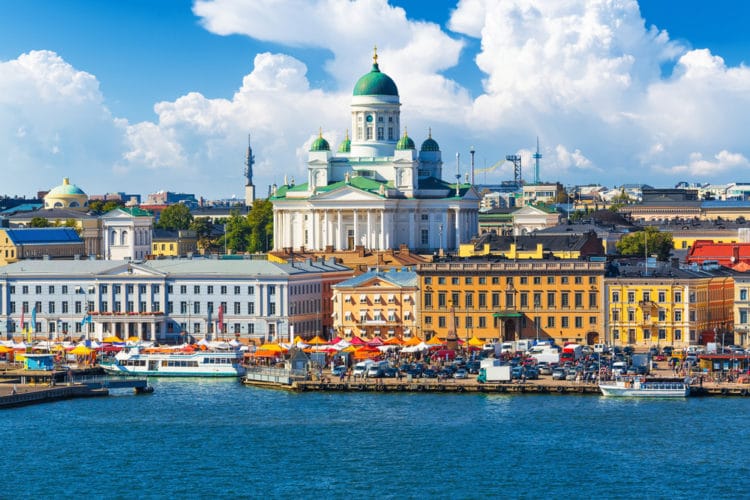The “Daughter of the Baltic Sea” — as the Finns affectionately call their capital — is distinguished from other European cities by its unique Scandinavian color, distinctive architecture, and unparalleled Nordic atmosphere of tranquility. The city also surprises with its location on the shore of the Gulf of Finland, where those arriving by sea can step directly from the ship into the city center. Equally interesting and surprising are the museums of Helsinki, which captivate with their extraordinary exhibits.
Design Museum
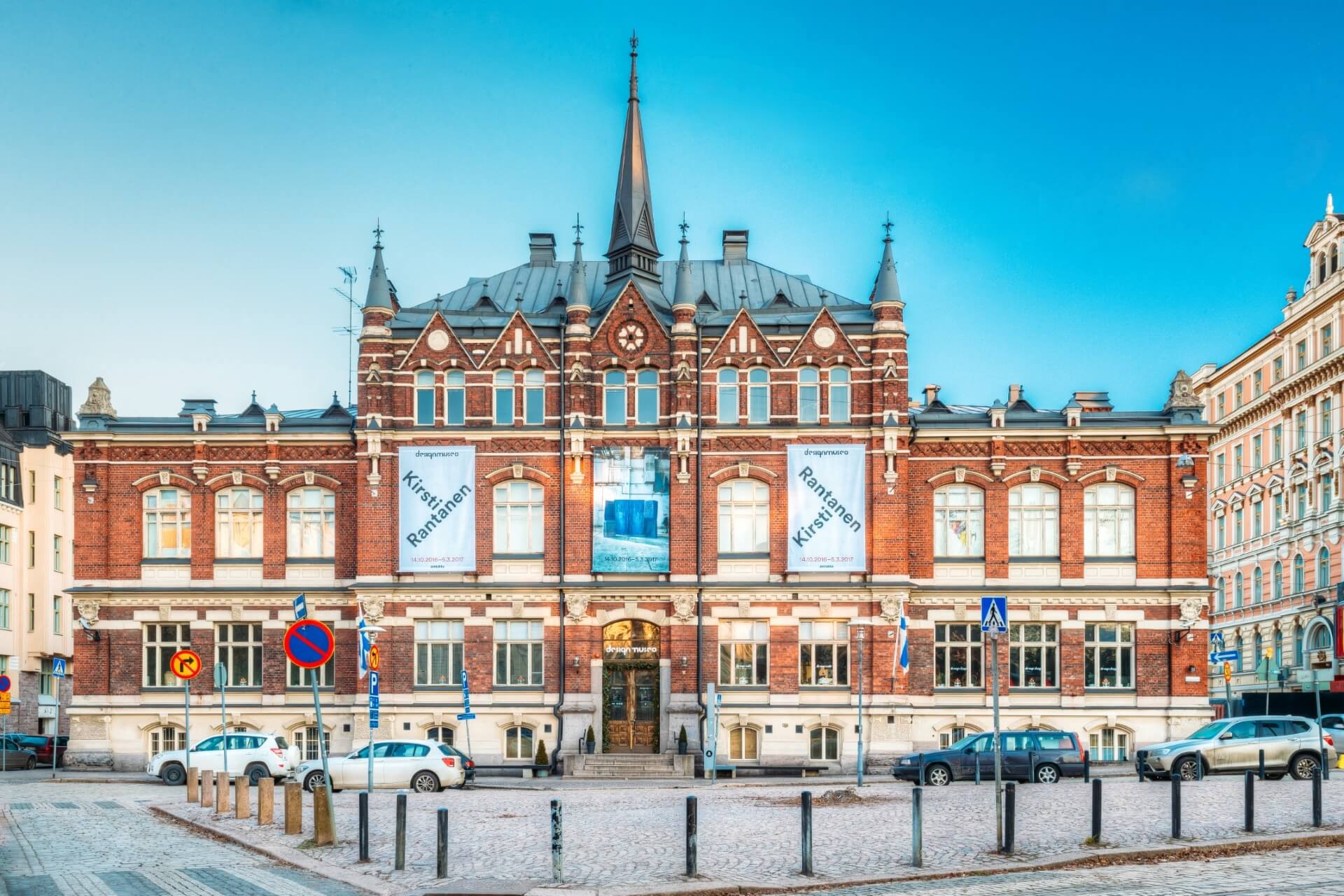
The diligence and inventiveness of the Finns can be seen by reading the story “Behind the Matches” by Lassila, which Leonid Gaidai turned into the brilliant comedy of the same name. The film vividly depicts the life and everyday life of the Finns, their ability to decorate everyday interiors with intricate crafts. It’s no coincidence that the oldest Design Museum, founded in 1873 when the term “design” wasn’t even known, is located in Helsinki. The then-existing Society of Crafts laid the foundation for the museum collection by acquiring hundreds of original design objects at the Vienna World’s Fair.
These items became visual aids for students studying at the School of Applied Arts and objects of admiration for lovers of beauty and elegance. For 100 years, the collection of design exhibits continually grew, occupying one of the old buildings. In 1978, the museum’s exhibits were moved to another building, specially constructed in 1895 by architect Nyström, which became a beautiful adornment of the city. It’s impossible to walk past it indifferently — the originality of the neo-Gothic architecture and design elements immediately attract attention.
The first floor of the museum houses the central exhibition “Finnish Form,” dedicated to the detailed history of the development of applied arts in Finland and other countries. Each exhibition hall has its specific theme: interior items, furniture, dishes, various accessories, samples of unique handicrafts, etc. Here you can see rare photos, drawings, and sketches of the world’s most renowned designers.
The second floor is dedicated to temporary exhibitions showcasing achievements in modern design, reflecting new development trends. Here you can see completely unusual items that amaze with their originality and attractiveness.
- Address: Korkeavuorenkatu 23
- Hours: Summer: every day, 11:00 – 20:00; Fall-Winter: Tuesday, 11:00-20:00; Wednesday-Sunday, 13:00-18:00; Closed on Monday
- Ticket Prices (in euros): Adults – 10, Seniors – 8, Students – 5, Schoolchildren – free
Museum of Contemporary Art “Kiasma”
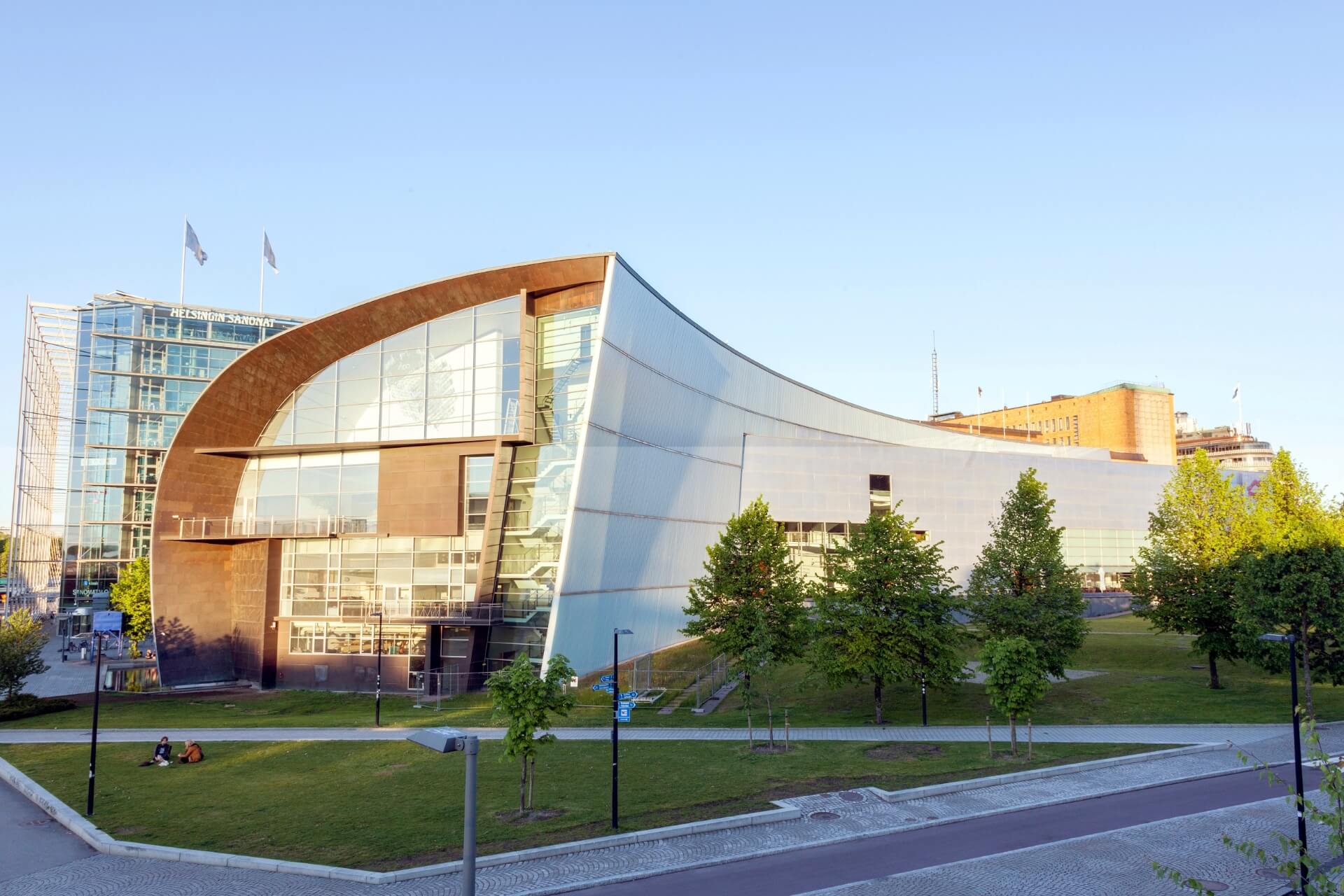
Located in an avant-garde building of cosmic proportions, the Museum of Contemporary Art is a universal center for culture and art of the 21st century. In the grand halls with unusual interiors, there are 25 diverse galleries showcasing various works of contemporary art.
There is much to marvel at here — a great multitude of exhibits illustrate the creative breadth of the authors of works of art in various directions. Tours are accompanied by a personal audio guide — a special electronic multilingual (5 languages) device that introduces visitors to the exhibits. Everything is provided for a comfortable stay: there is a cafe, restaurant, shop, and even a library.
- Address: Helsinki, Mannerheiminaukio 2
- Hours: Wednesday-Friday, 10:00-20:30; Tuesday, Sunday, 10:00-17:00; Saturday, 10:00-18:00; Closed on Monday
- Ticket Prices (in euros): Adults – 12, Seniors – 8, Children (under 18) – free
Science Center “Heureka”
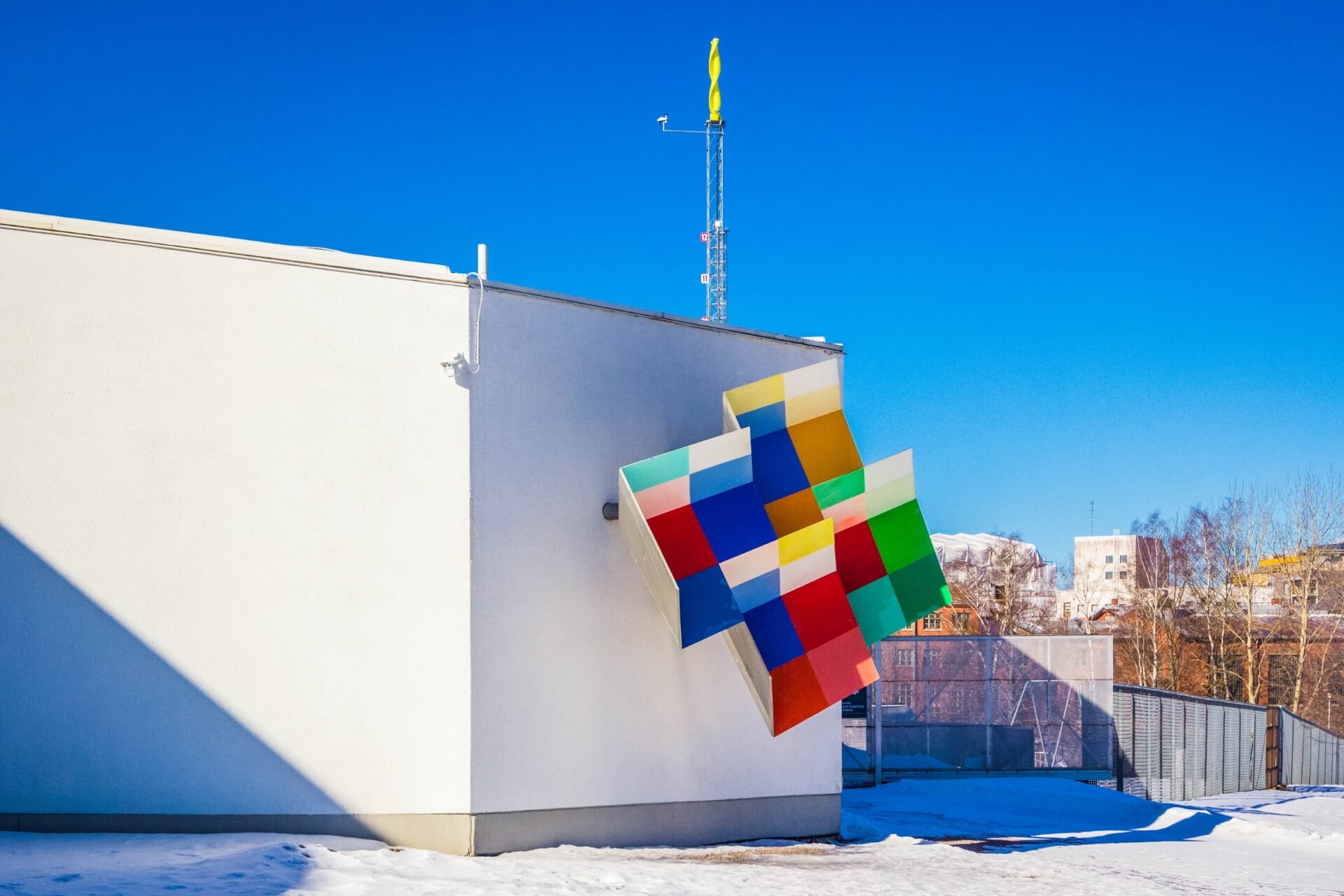
An amazing place where even the laziest and least curious children can feel like great experimenters and pioneers — the science center “Heureka,” which opened on April 28, 1989, in the suburb of Helsinki, the town of Vantaa. In this unique museum, all exhibitions are interactive, allowing visitors to participate in various chemical, physical, mathematical, and other experiments themselves. For example, participate in the virtual process of making paper or conduct physical experiments.
Here you can explore 200 exhibits illustrating discoveries in various fields of science. The summer park of scientific experiments with water, “Galileo,” where one learns to build bridges, generate electricity, etc., is particularly popular. Equally fascinating is the visit to the Vattenfall Planetarium, equipped with a giant sphere digital 3D screen showing educational science films. They are narrated in four languages: Finnish, Swedish, English, and Russian (using special headphones). A scientific game show “Path to the Stars” introduces the mysteries of the Universe.
National Museum of Finland
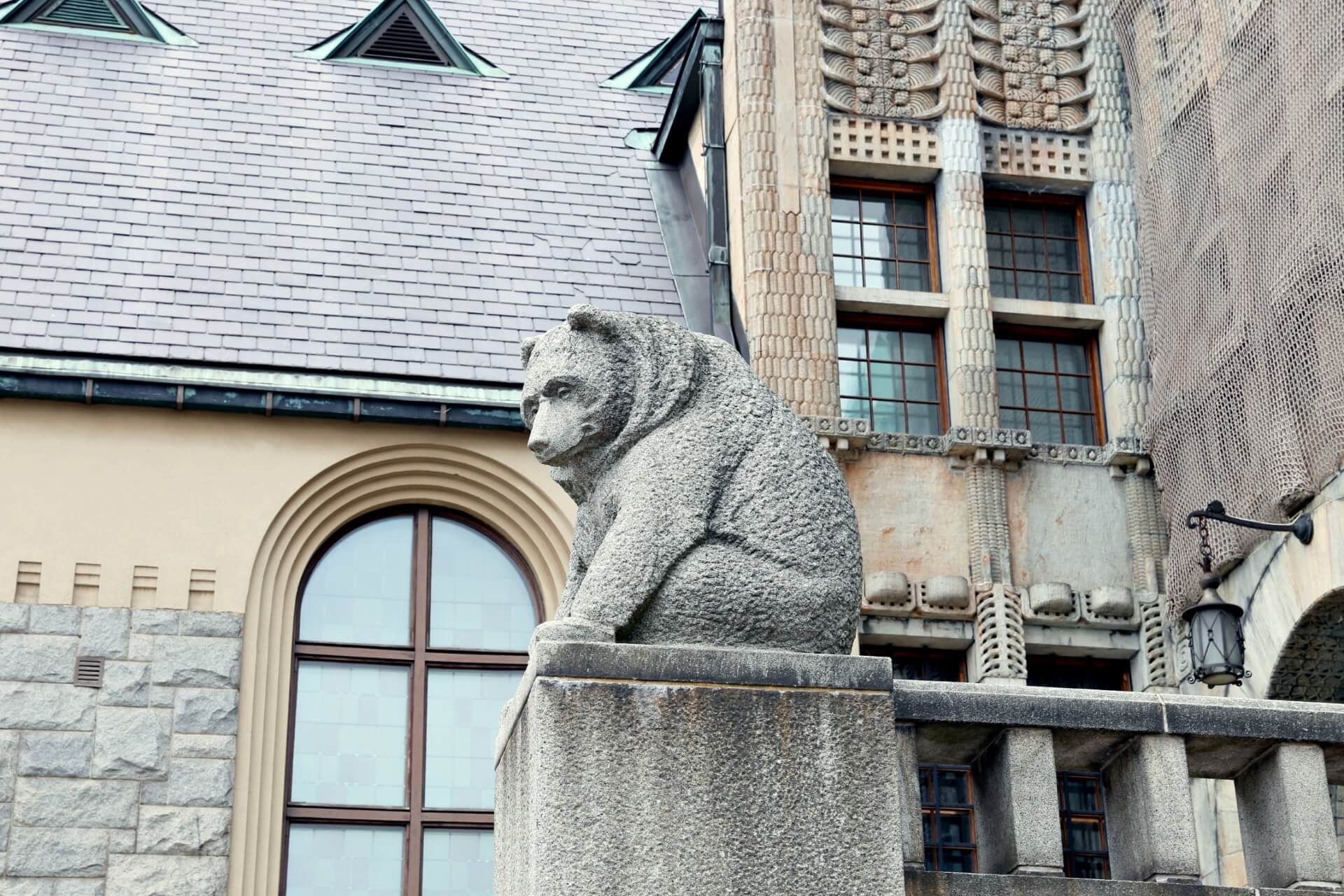
The magnificent building, architecturally resembling a medieval Scandinavian castle, is perfectly suited to be the National Museum of Finland. In essence, it is a large repository of cultural and historical artifacts illustrating the state’s development from ancient times to the present. Permanent and temporary ethnographic, cultural, and art exhibitions fully reflect all aspects of Finnish life.
The Historical Department contains unique archaeological artifacts: ceramic and metal products, household items, various types of weapons, and national jewelry. The “Treasures” exhibition presents numismatic collections, jewelry, and beautifully decorated examples of cold arms. The National Museum is the pride of Finland and a very popular place in the capital.
- Address: Mannerheimintie 34
- Hours: Tuesday-Sunday, 11:00-18:00; Closed on Monday
- Ticket Prices (in euros): Adults – 10, Students and Seniors – 7, Children under 18 – free
Amos Anderson Art Museum
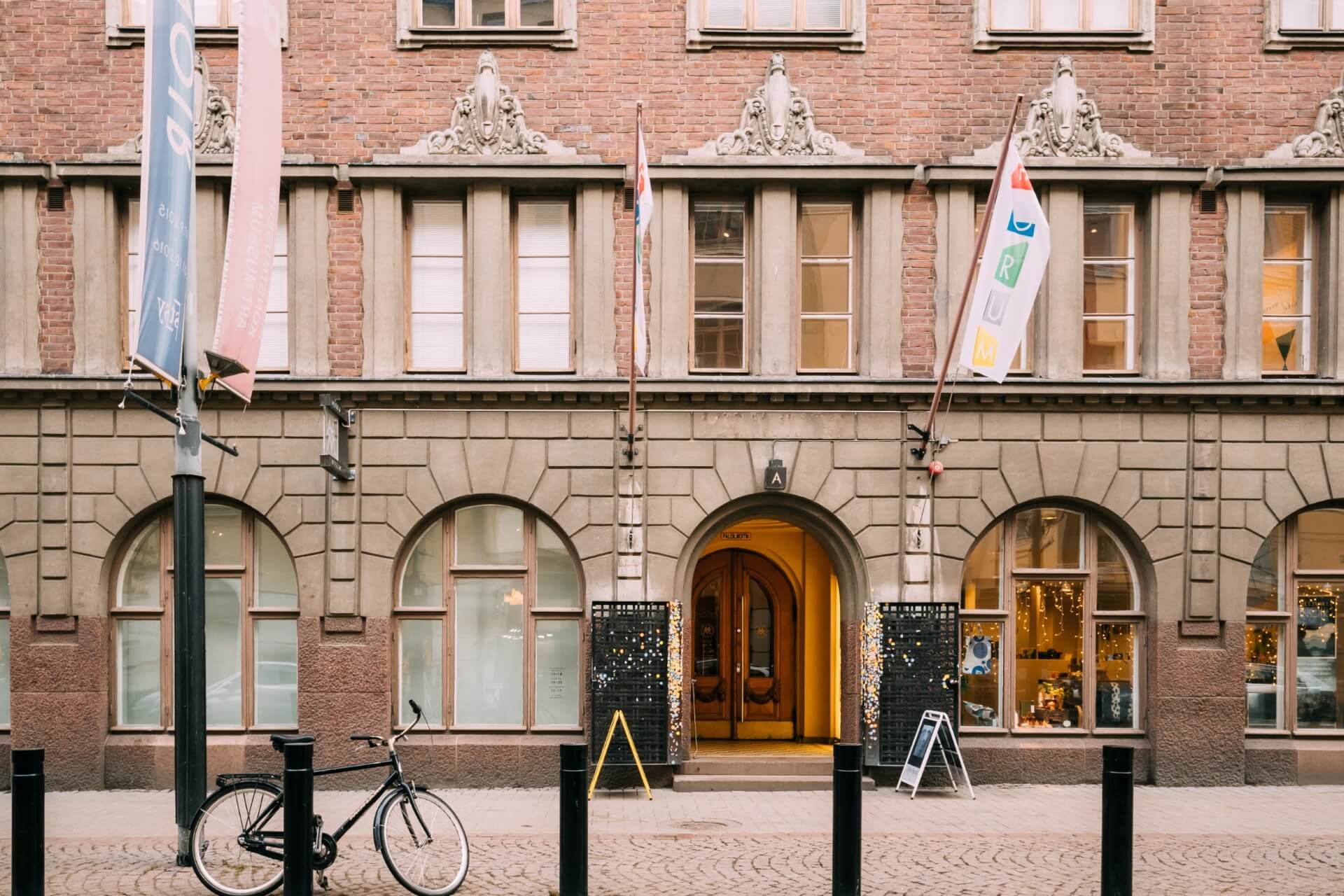
The largest collection of fine and applied art in Finland is housed in the Anderson Museum – named after the famous philanthropist and collector, owner of several publishing houses, and a prominent Swedish-language newspaper. After the collector’s death (1965), his house with all collections became an Art Museum.
The upper floors of the house contain permanent exhibitions, while the lower floors host temporary exhibitions. Numerous paintings, sculptures, photographs, and applied art objects in various styles are presented in the museum halls. Rare furniture, extraordinary ceramics, and amazing tapestries, which belonged to Anderson, delight visitors. The museum hosts seminars, lectures, and conferences on contemporary art.
- Address: Yrjönkatu 27
Ateneum Art Museum
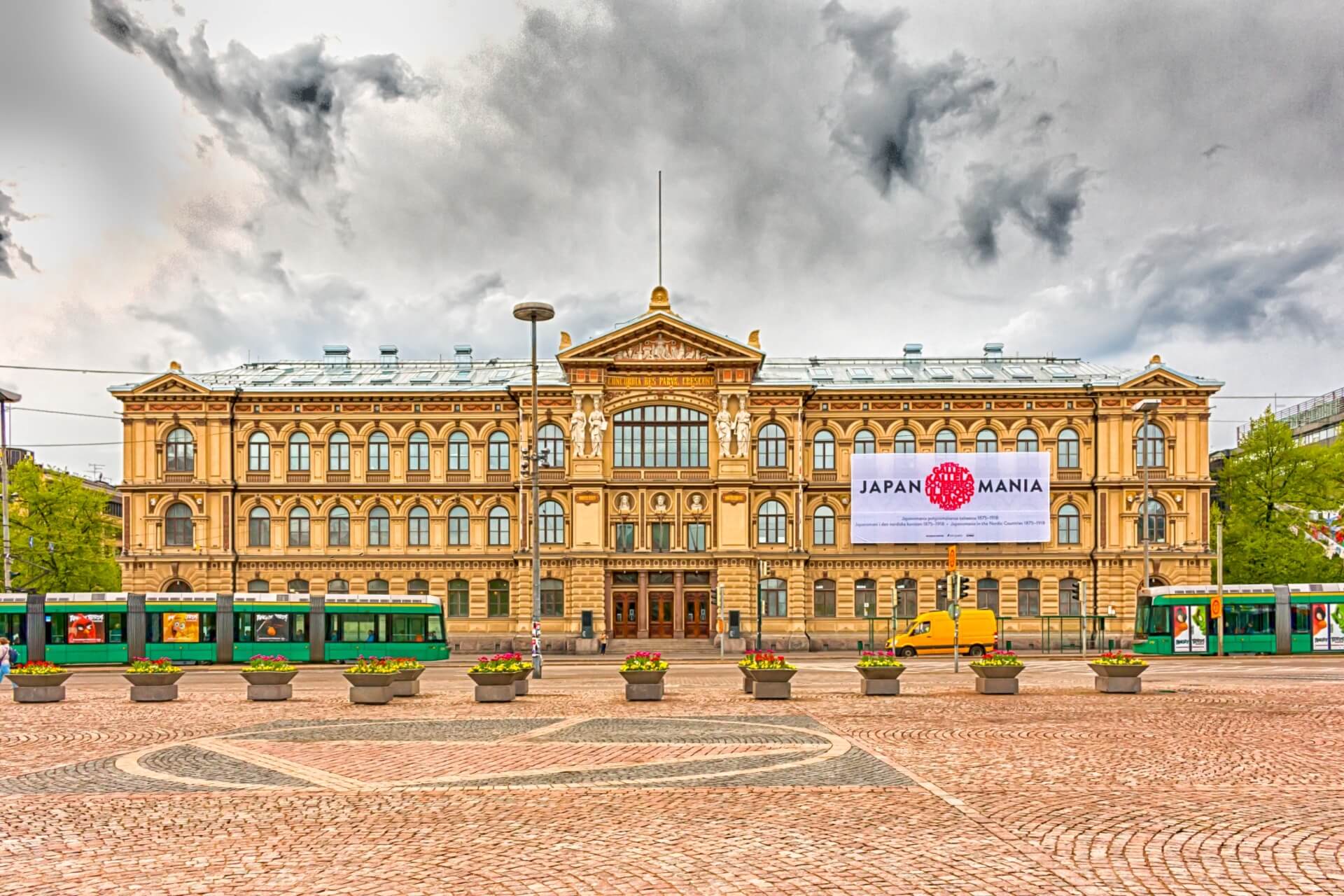
This museum is part of the Finnish National Gallery along with “Kiasma” and the Sinebrychoff Museum. The grand collection of the Ateneum Museum began in 1887 with ten masterpieces of painting donated by the Russian Emperor Nicholas II to the Finnish Artists’ Association. The Ateneum collection now includes several thousand works, among which are famous paintings by Van Gogh, Chagall, Repin, Vasilev, Modigliani, Cézanne, Gauguin, and other painting geniuses (totaling 650 works).
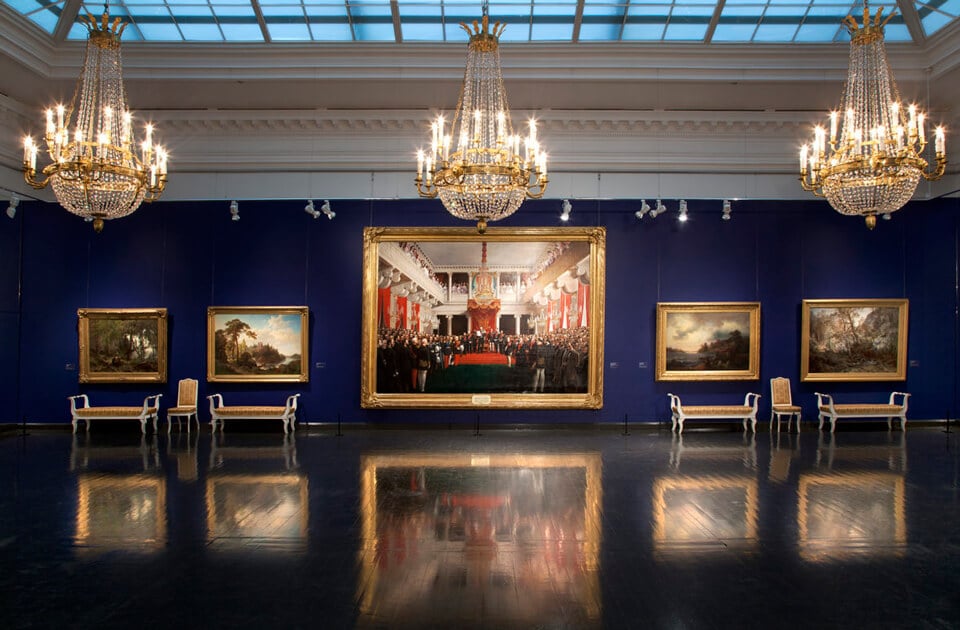
The central place in the museum is occupied by Finnish masters’ paintings, including works by Simberg, Halonen, Edelfelt, and others (a total of 4,000 paintings from different eras and styles). The museum also generously showcases examples of Scandinavian graphical prints, watercolor sketches, pencil sketches, and Japanese woodcuts. The museum building itself is an architectural masterpiece by the esteemed architect Heier.
The magnificent artistic design is the work of the famous Finnish sculptor Sjöstrand, who created the stunning sculpture of Aphrodite (the museum is named in her honor) and busts of world-renowned artists. The institution offers excellent conditions for visitors’ comfortable stay.
- Address: Kaivokatu 2
- Hours: Tuesday, Friday, 10:00-18:00; Wednesday-Thursday, 9:00-20:00; Saturday-Sunday, 10:00-17:00; Closed on Monday
- Ticket Prices (in euros): Adults – 15, Students and Seniors – 12, Children under 18 – free
Seurasaari Open-Air Museum
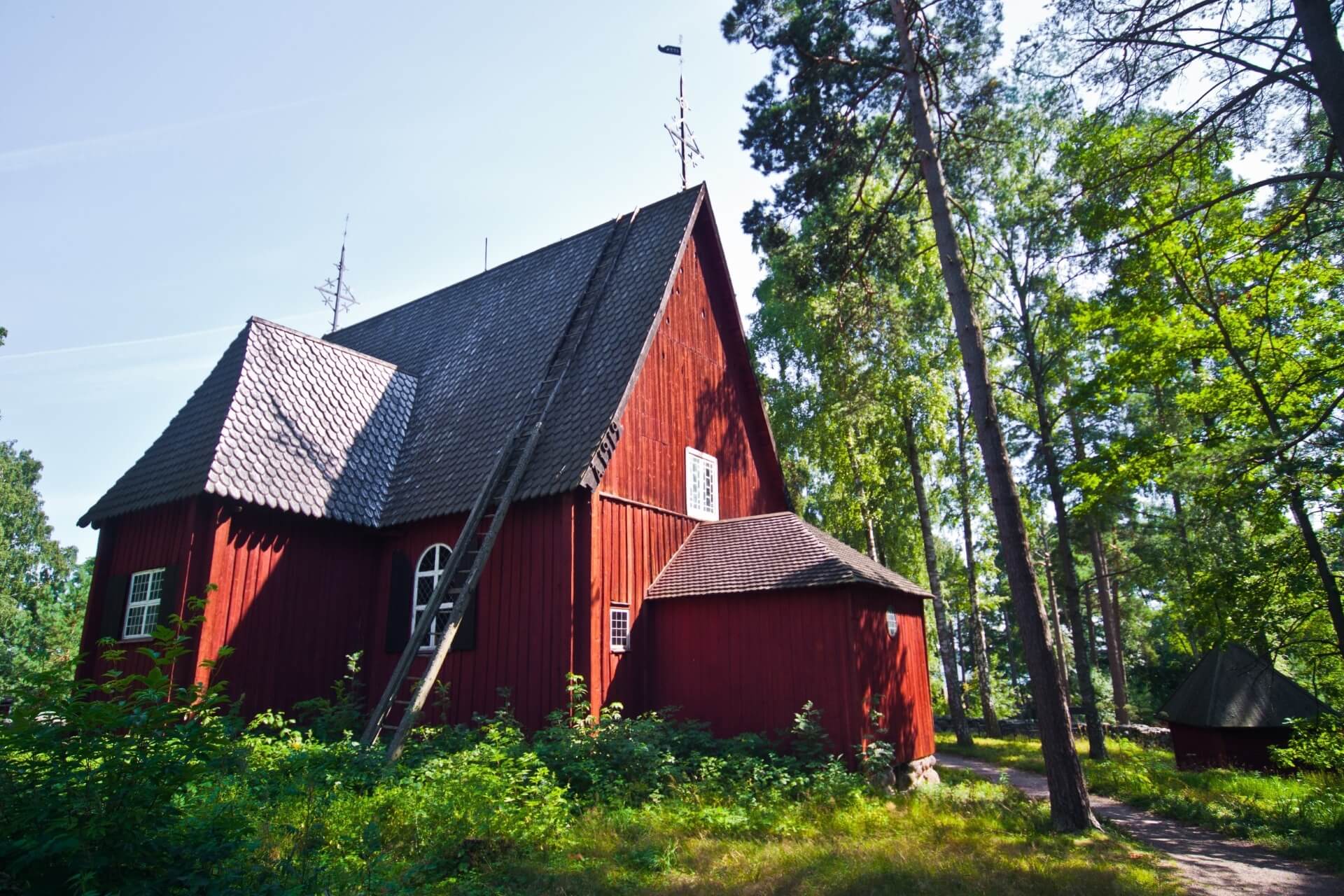
A favorite leisure spot for many residents of Helsinki and tourists is Seurasaari Island, connected to the mainland by a pedestrian bridge. Here is a unique open-air museum that vividly represents the provincial past of Finland. Residential houses, farm buildings, windmills, saunas, stables, and an old church have been brought here from all over the country. There are even reindeer skin yurts – ancient dwellings of Finnish reindeer herders.
Among the wooden structures, there are unique specimens made without a single nail – a testament to the high craftsmanship of Finnish peasants. Many household items collected in the museum give a clear idea of the country’s rural lifestyle, crafts, and types of labor. It’s a great pleasure to stroll around the island among the trees, where many squirrels live.
In summer, visitors can relax on the beach (west coast of Seurasaari), swim, and sunbathe under the northern sun. Finns hold holidays and folk festivities with dances, songs, and bonfires on the island. Young people come here to get married in the wooden church. The island has cafes and restaurants serving national dishes. There’s also the house-museum of former President Kekkonen (who ruled the country for 25 years), where the 1960s atmosphere has been preserved.
- Hours: Summer: every day, 11:00-17:00; May 15-31 and September 1-15: Monday-Friday, 9:00-15:00; Saturday-Sunday, 11:00-17:00
- Ticket Prices (in euros): Summer: Adults – 9; May, September: Adults – 6; Children (7-17) – 3; Family – 20
Hotel and Restaurant Museum
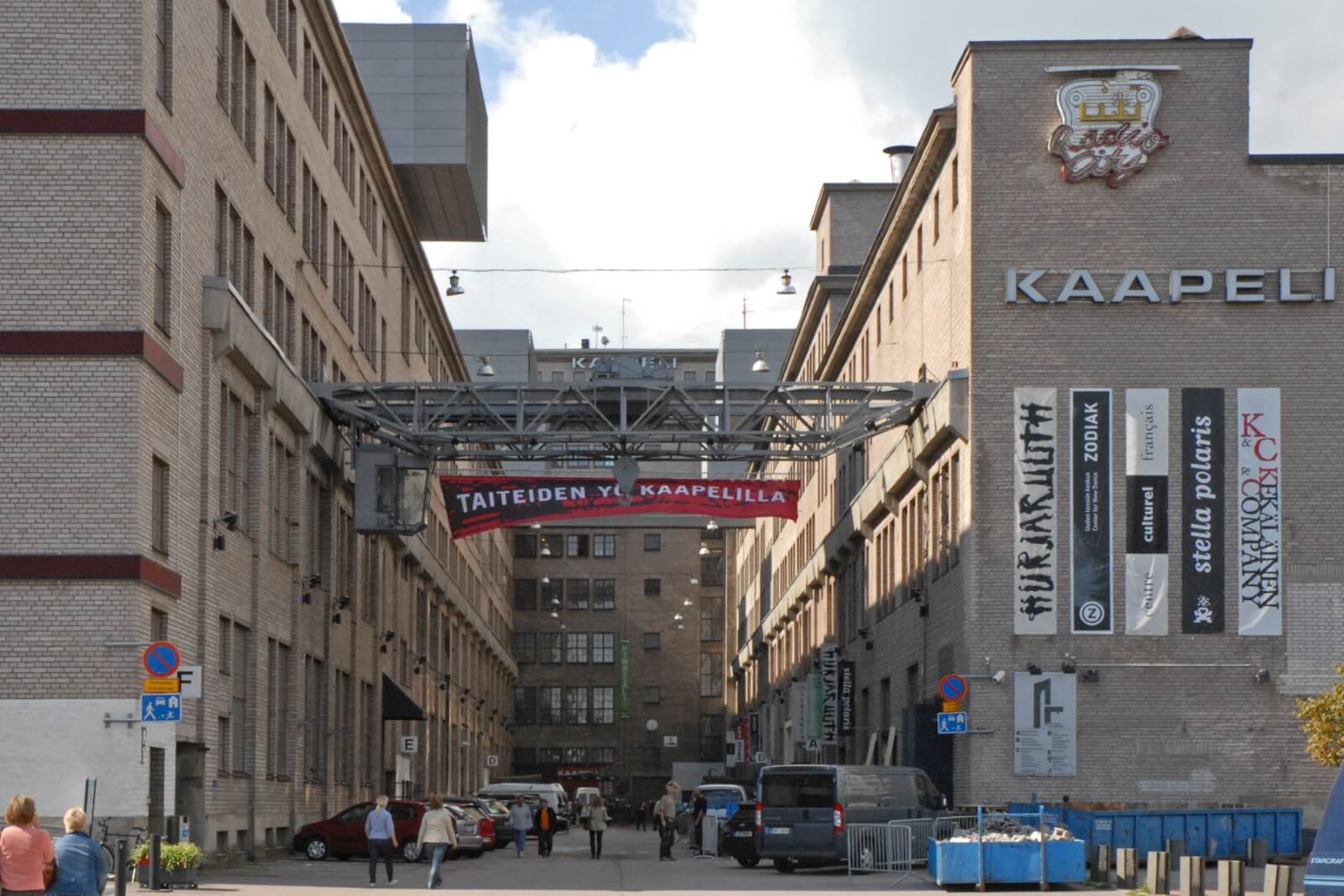
In 2012, the only Hotel and Restaurant Museum in Finland was opened in a renovated building of the former cable factory. Its exhibits detail all the secrets of this important sphere of activity, introducing the history of Helsinki hotels and restaurants’ emergence and development.
Necessary attributes in the form of kitchen utensils, tableware, hotel furniture, various menus, and recipes introduce visitors to all aspects of the popular business from the 19th century to the present day.
Here, the kitchen, service rooms, hall, wine cellar are represented, where one can see the everyday backstage of the hotel business and the daily work of the service staff. Unique sound design transports visitors to a restaurant of the past century, allowing them to hear the sounds of variety shows. Despite its short existence, the museum has become extremely popular among Finns and tourists.
Natural History Museum
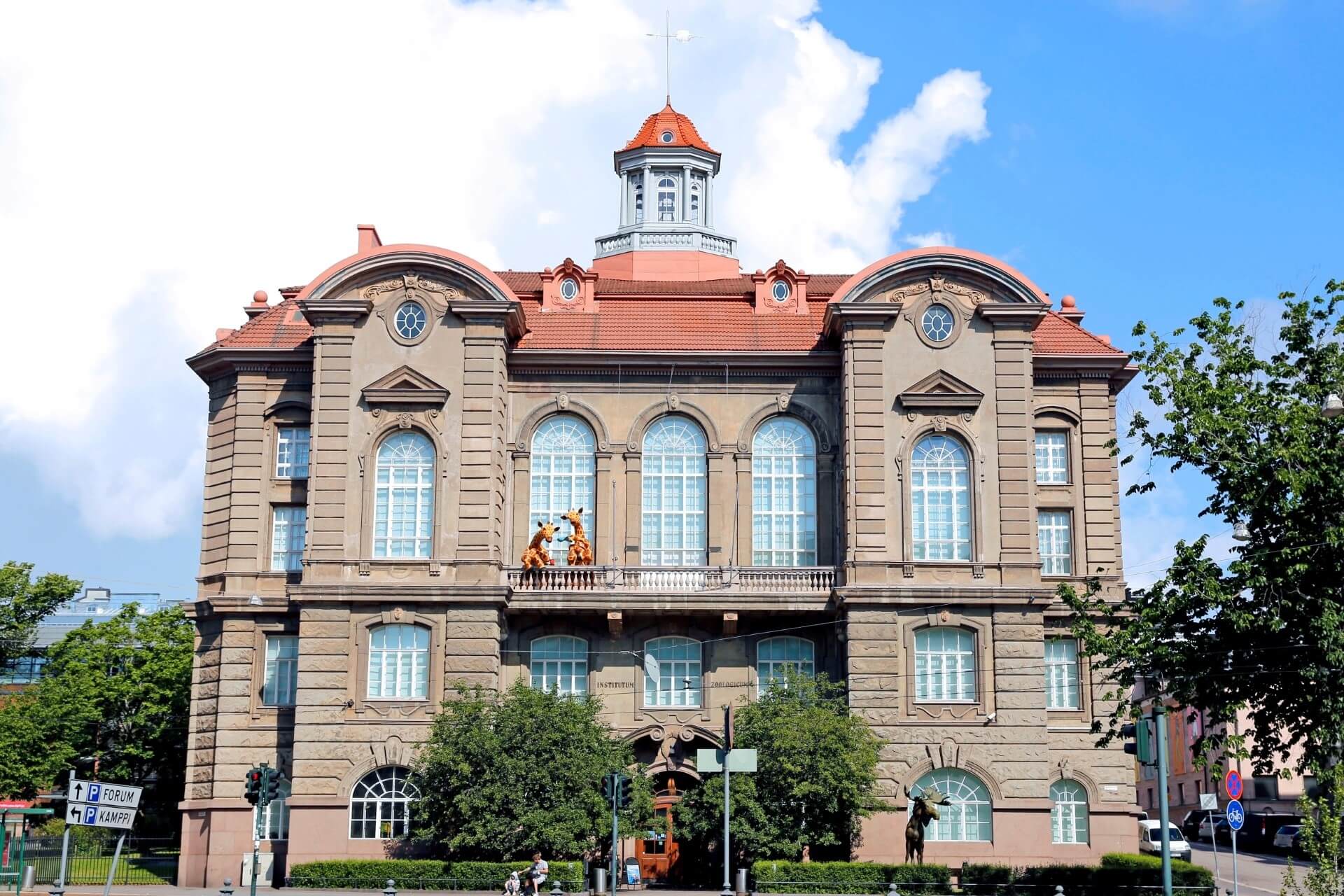
An exciting acquaintance with the development of the fauna world on the planet awaits everyone in the old mansion where the Natural History Museum is located. The visit here is organized in an interesting and entertaining form. Right at the entrance, where everyone is greeted by a gigantic elephant figure, you can take a crossword sheet (in 5 languages) and a pencil. By walking around the museum’s exhibits and examining the exhibits, you can gradually answer all the crossword questions.
Each thematic section of the museum (there are 4), and temporary exhibitions are designed very originally and intriguingly. The hall, where an African night with twinkling large stars, cries of exotic birds, and the heavy steps of a hippo with a gaping mouth is recreated, arouses exceptional interest. Masterfully made models of the ancient Triceratops, giant squid, and dinosaur give a clear idea of these creatures. Children are allowed to touch some exhibits marked with a palm symbol: a dinosaur egg, stuffed animals.
The museum has an elevator, a cafe, and a souvenir shop – the staff strives to ensure a comfortable journey through the world of natural history.
- Address: Norra Jarnvaqsqatan 13
- Hours: Tuesday-Friday, 9:00-17:00; Weekends, 11:00-16:00
- Ticket Prices (in euros): Adults – 10, Children (7-17) – 5; Children under 7 – free
On the first Thursday of every month – free entry: Summer – 15:00-17:00; Winter – 16:00-18:00.
Submarine “Vesikko”
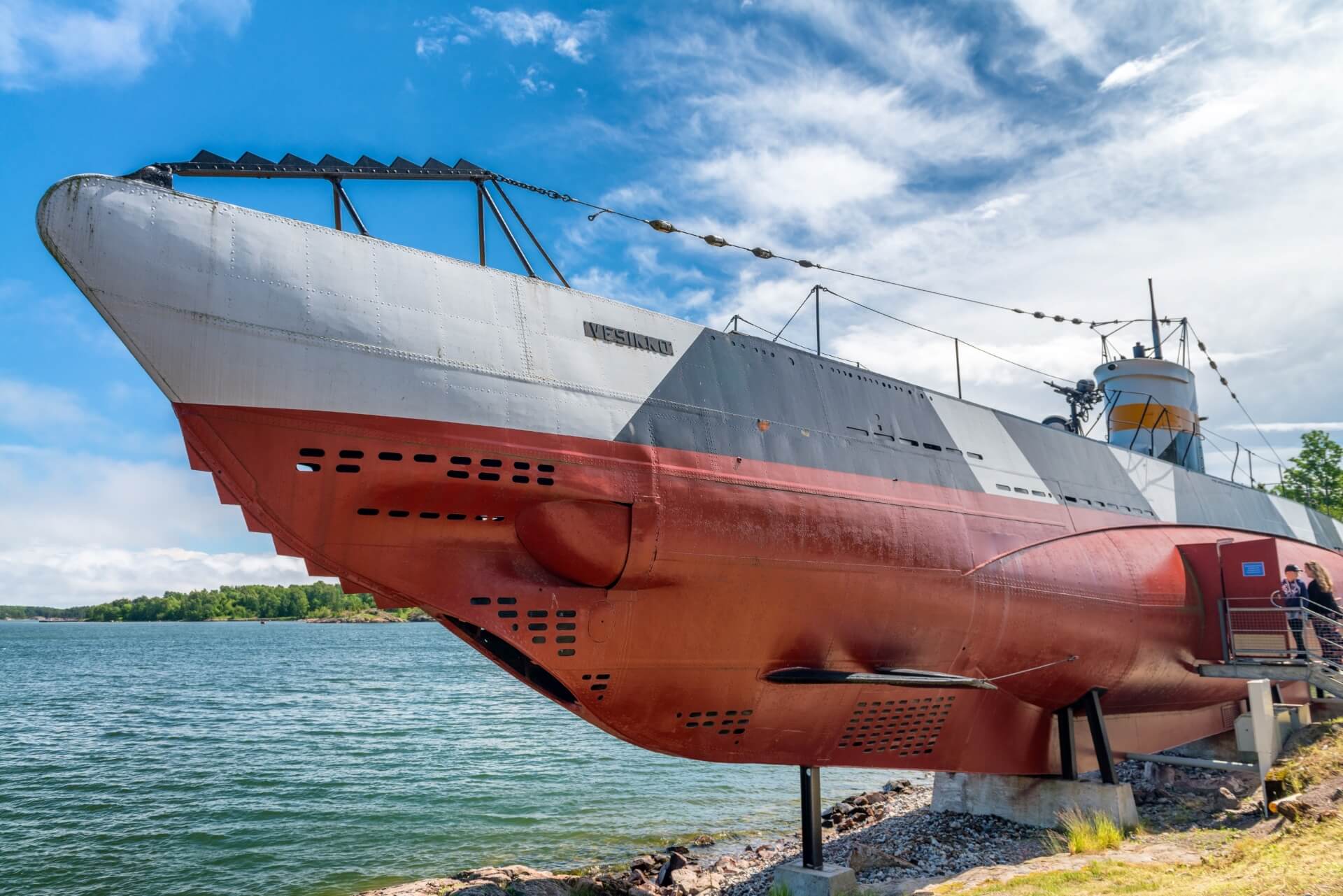
On the island of Suomenlinna in the Sveaborg fortress is a unique submarine museum “Vesikko.” Constructed by Dutch shipbuilders and launched from the Turku shipyard in 1933, the submarine participated in two wars (the Soviet-Finnish and World War II). After the agreement prohibiting submarines in Finland between the Soviet and Finnish states, “Vesikko” became an unnecessary object and stood abandoned for two decades. To prevent it from turning into rusting iron, former crew members repaired the submarine and turned it into a museum (since 1973), part of the Finnish Military Museum.
All submarine compartments have been restored, devices and mechanisms have been cleaned of rust and painted, and the working environment has been recreated in the auxiliary rooms. Visitors can get a complete idea of the equipment and functioning of the “Vesikko” submarine.
You can get here from Helsinki by ferry. The museum is open every day in summer – 11:00-18:00. Entry price: Adults – 5€, Children – 3€, Family – 12€.
Helsinki City Museum
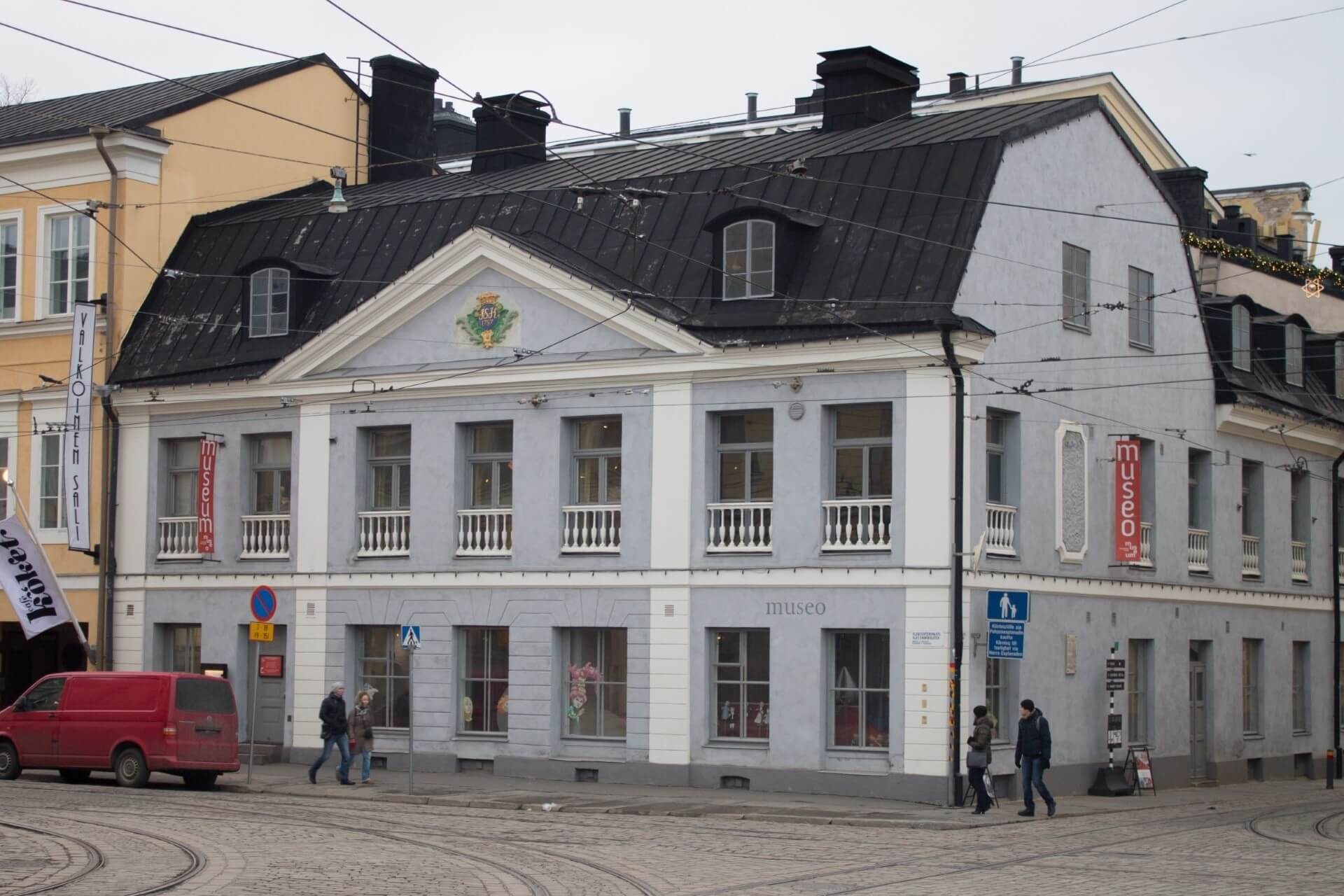
A museum dedicated to the history of the Finnish capital’s origin and development. Its four-story building is located on Aleksanterinkatu Street. Each floor’s exhibit has its focus: vintage photos on the first, a recreation of a typical 20th-century Finnish apartment on the second, a retro-style entertainment corner for children on the third, and temporary exhibitions on the fourth.
The Helsinki City Museum oversees structural divisions dedicated to various aspects of Helsinki’s life:
- Power Plant Museum
- Tram Museum
- Burgher House (1818)
- Sederholm House (1757)
The interior recreates the living conditions of Finnish bourgeoisie and merchants, as well as vividly shows authentic examples of technical devices and equipment. Visiting the Helsinki City Museum and its branches is free of charge. Access is provided according to the schedule:
- Monday-Friday: 9:00-19:00
- Saturday-Sunday: 11:00-17:00
Didrichsen Art Museum
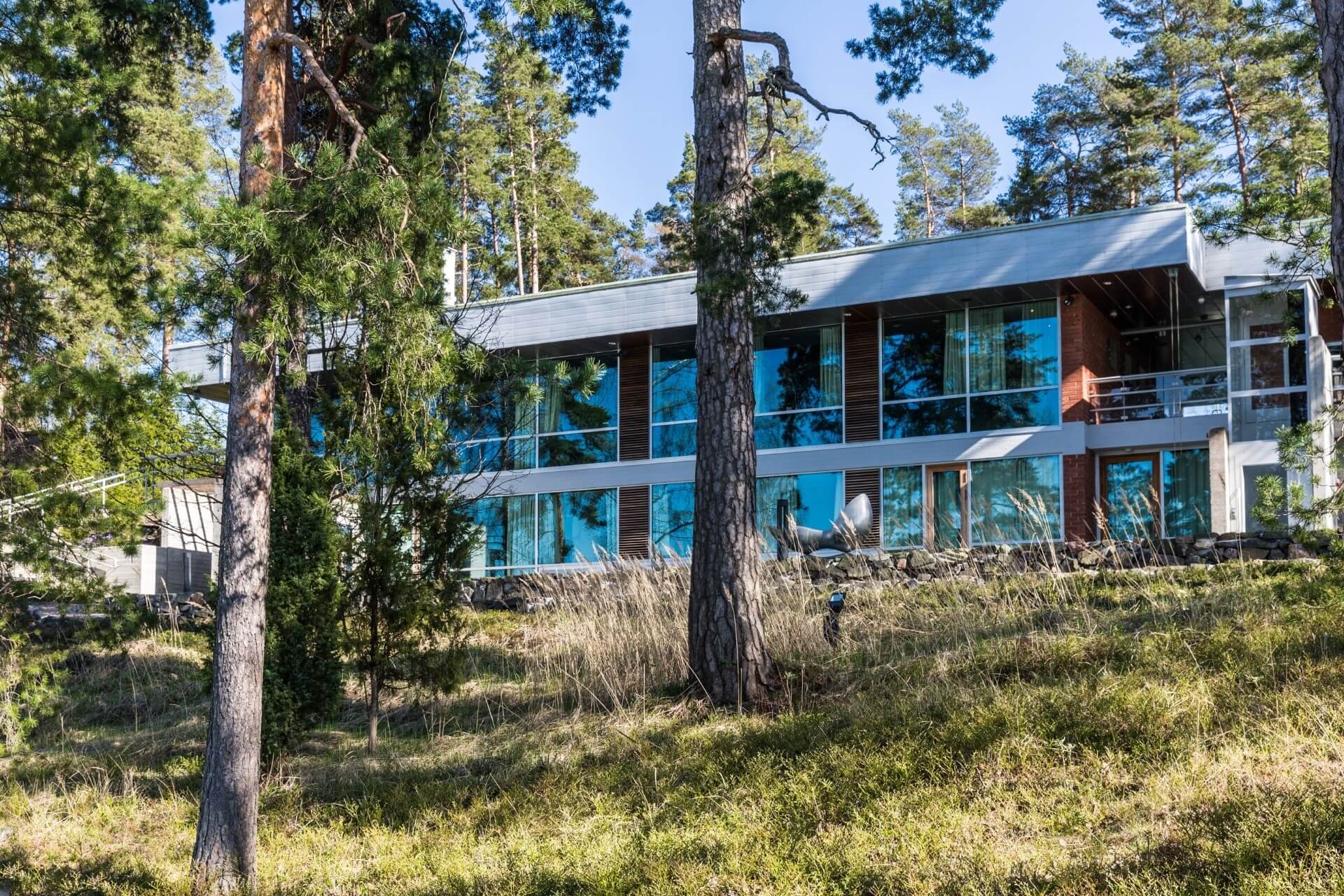
The island of Kuusisaari in western Helsinki gained fame thanks to the art museum arranged by the Didrichsen couple. Businessman Gunnar Didrichsen and his wife began collecting works of Finnish artists in the 1950s. The core of the collection consisted of works by A. Gallen-Kallela, P. Halonen, and E. Järnefelt. In the 1960s, masterpieces of modernist style created by P. Picasso, C. Pedersen, and A. Tàpies were added to the collection.
The private collection of the Didrichsens was presented to the public in 1965. The museum became known as a repository of artifacts from pre-Columbian civilizations of America. A separate hall is dedicated to Ancient Chinese art. The manor’s park area features 15 sculptures by contemporary authors.
- Hours: Daily (except Monday), 11:00-18:00
- Ticket Prices (in euros): 10-12; Children – free
Helsinki Art Museum HAM
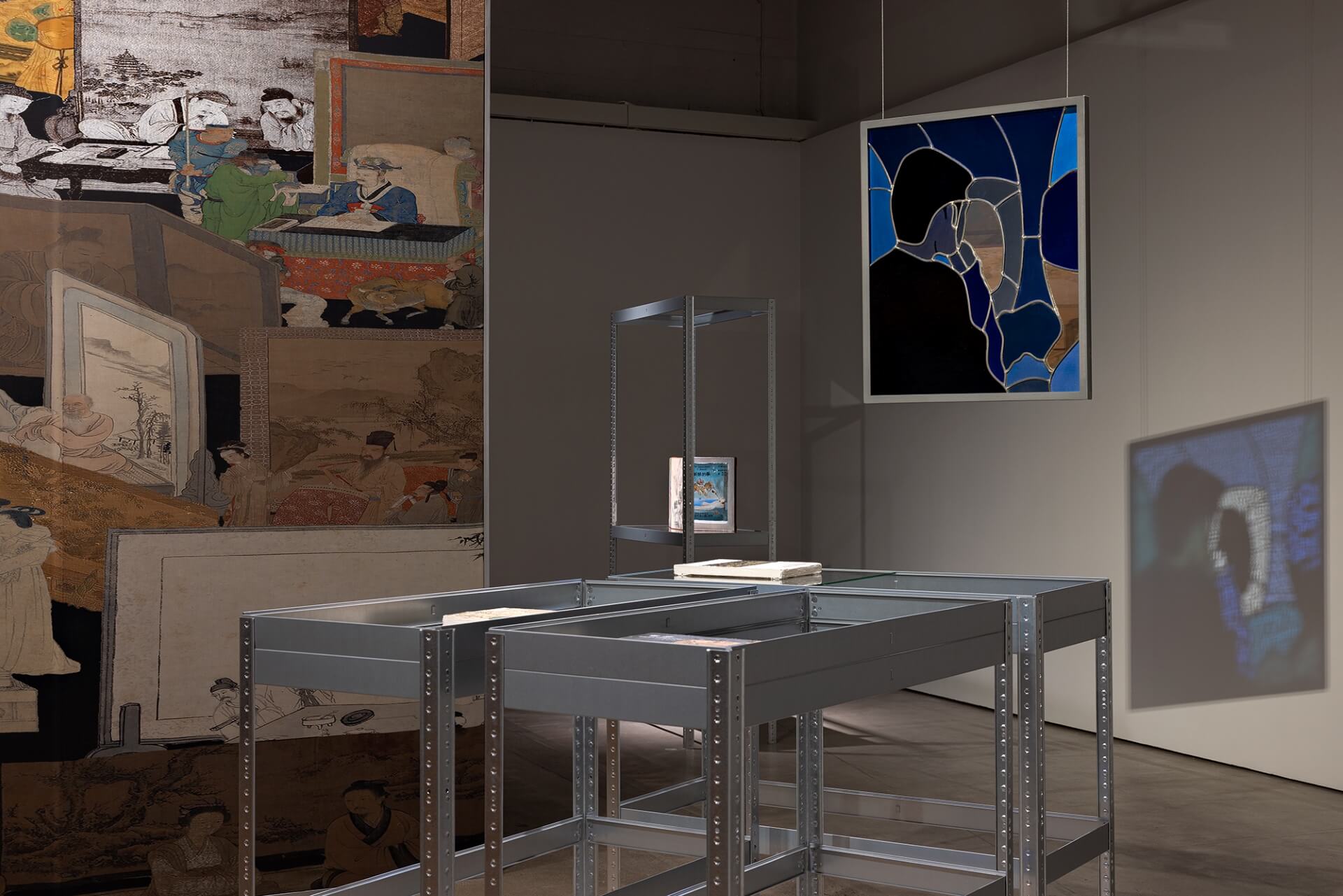
The uniqueness of HAM lies in its extensive collection (over 9,000 exhibits) and its mosaic distribution in the urban landscape. Sculptures under the auspices of HAM are installed on the streets and squares of Helsinki. Some are exhibited in public libraries, educational institutions, and medical centers. The main core of the art collection is concentrated in the Tennis Palace, near the Kamppi metro station. The indoor tennis court was built in 1937 and is an architectural landmark of the city.
The HAM collection includes works of contemporary Finnish art (20th-21st centuries). The first exhibit in the museum was the sculpture of the poet J. Runeberg, gifted to the city in 1885. The exhibition at the Tennis Palace is open every day (except Monday) from 11:00 to 19:00. Ticket prices: Adults – 12€, Concessions – 10€. Children under 18 – free.
Military Museum
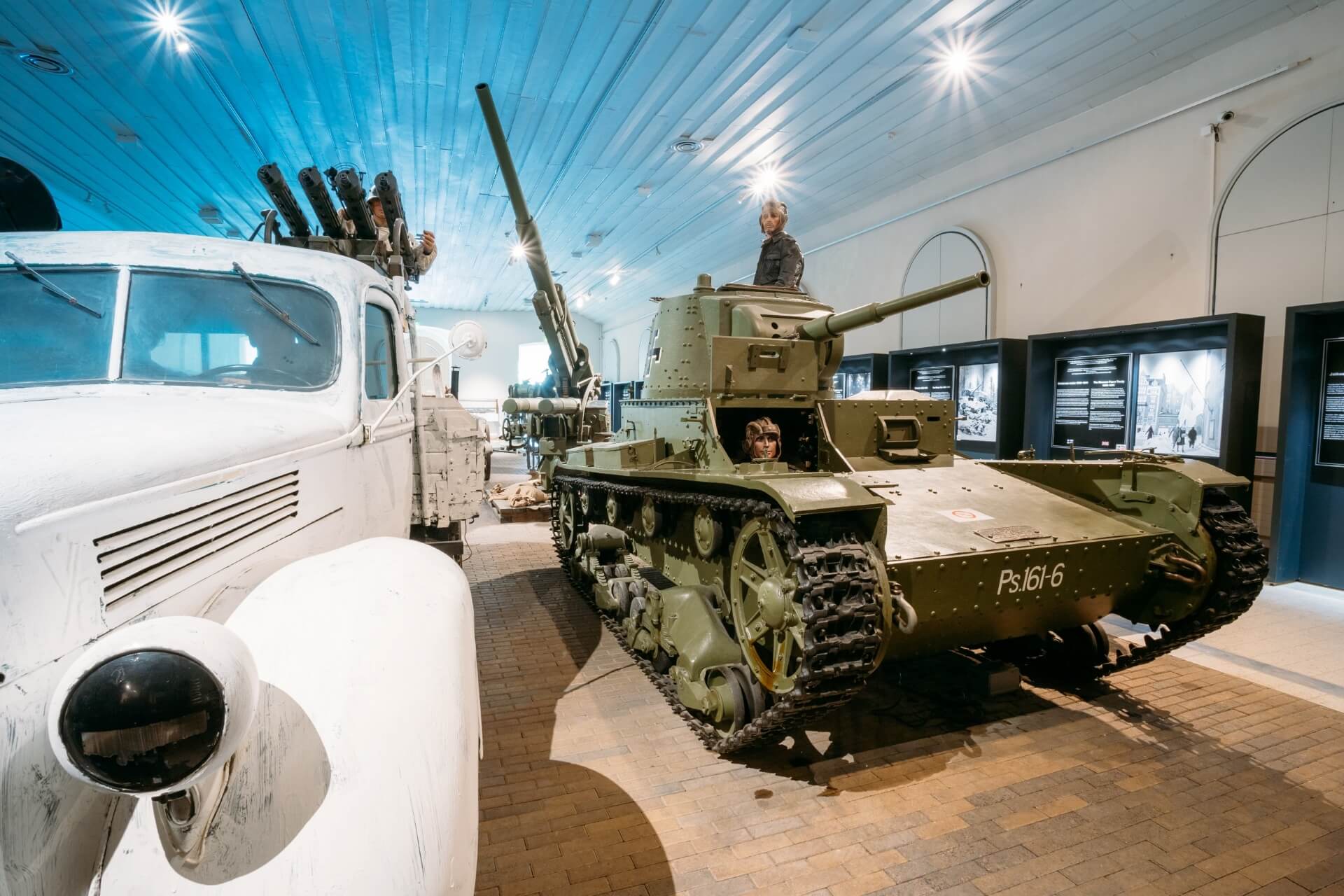
Under the Ministry of Defense, there is a specialized museum highlighting the history of the Finnish armed forces. Its collection includes items related to the activities of Finnish military units and various branches of the military. The collection was first exhibited in 1908 for the 100th anniversary of the Finnish War. Based on this collection of rarities, a museum was created in 1929. It included departments: Jaeger, Intelligence, Navy, and Armaments.
The museum was given a former barracks building constructed in the 1880s to house its exhibits. Since 1973, the submarine “Vesikko” has been open for public visits in the Artillery Bay as a separate exhibit. In the 1980s, the Manege building was converted for museum needs, creating an exhibition about the history of the Sveaborg (Suomenlinna) fortress. The Military Museum’s overall collection includes more than 200,000 artifacts, including documents, photographs, orders, uniforms, flags, etc.
- Hours: Daily, 11:00-18:00
- Ticket Prices (in euros): Adults – 7, Concessions – 4
Museum of the Bank of Finland
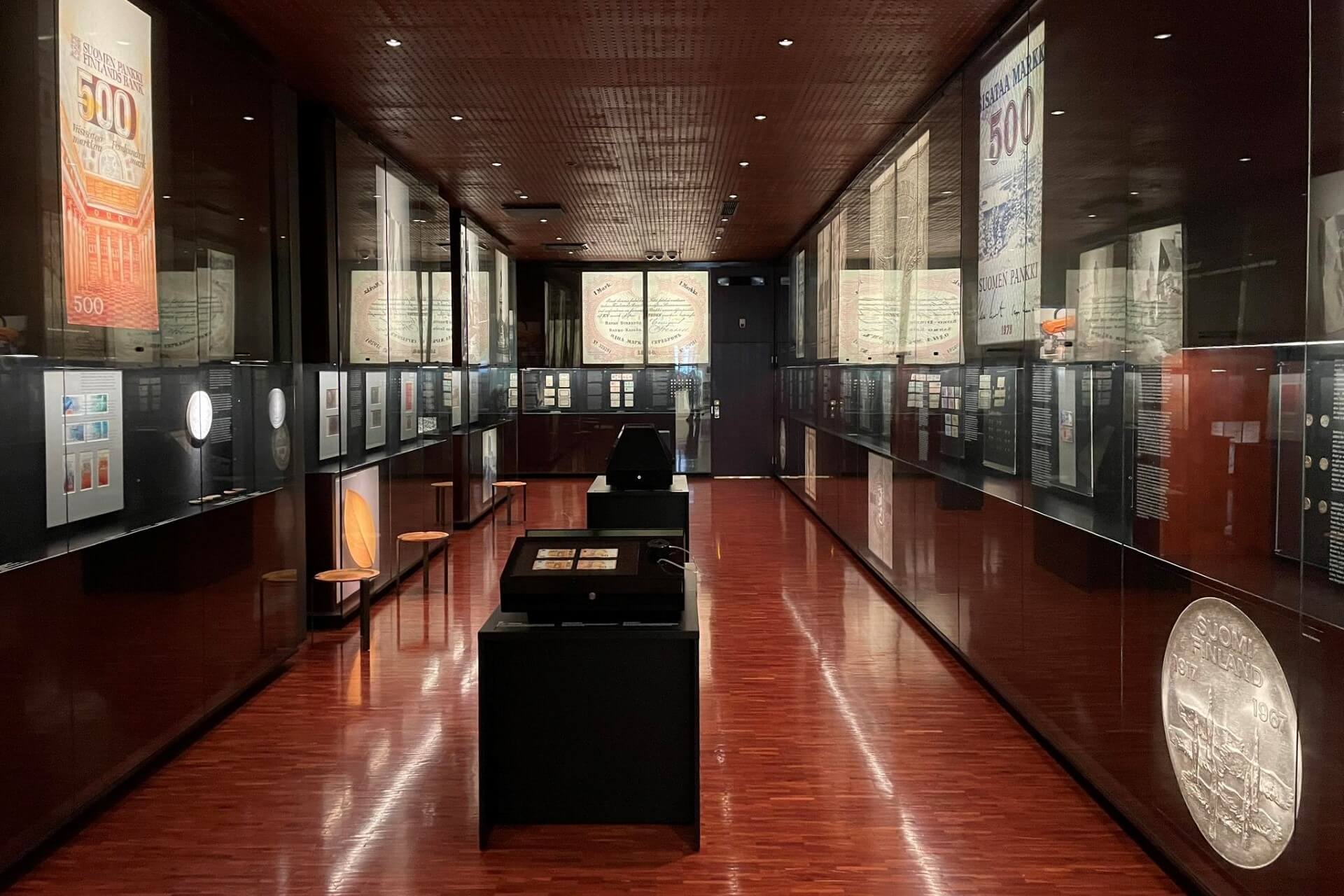
One of the oldest in Europe – the Bank of Finland established its museum in 2003. Its exhibits are displayed in an old 19th-century building designed by architect Bonstedt. The building is located at Snellmaninkatu 2. The museum’s main goal is educational. It tells the history of monetary and credit relations in Finland and other Scandinavian countries. Showcases display various historical and modern currencies.
Tours are free by prior arrangement. The guide’s narration is in English, Finnish, or Swedish. The tour’s duration is adapted to visitors’ requirements. There is a shop and cafe.
- Hours: Tuesday-Friday, 11:00-17:00; Saturday-Sunday, 11:00-16:00; Closed on Monday
Finnish Railway Museum
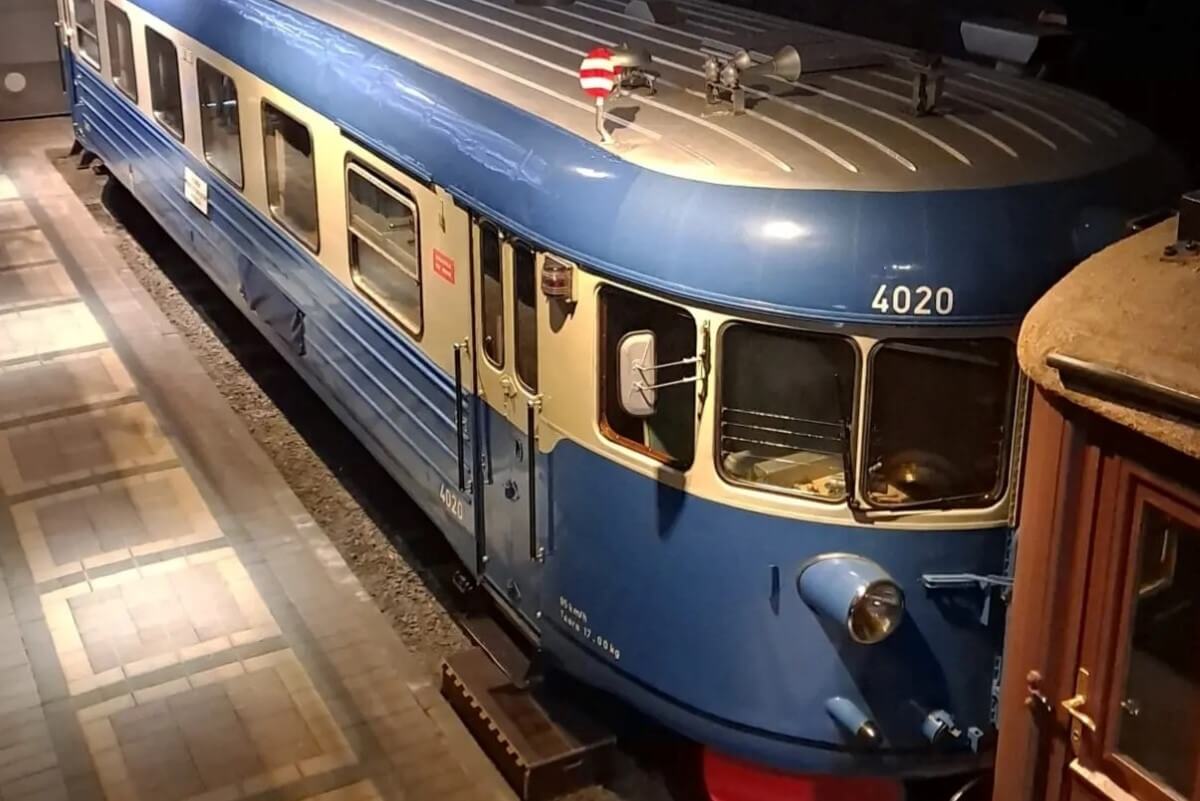
In the late 19th century, an unusual museum displaying old locomotives was organized in the Finnish capital. The railway technology samples attracted interest from children and adults. In 1974, the museum was relocated outside the city by authorities’ decision. Part of the exhibition was placed in specially constructed buildings. The old equipment perfectly fit into the space of the former steam locomotive depot at the Hyvinkää station.
The museum collection includes locomotives, carriages, railcars produced in the Russian Empire, the USA, and European countries. The highlight of the tour program is the Romanov family train. The station premises recreate the early 20th-century environment. There is a small collection of station nameplates, semaphores, and signs. Visitors can ride on a scale model train assembled at a 1:8 scale.
- Hours: Summer: daily; Winter: closed on Mondays; Tuesday-Friday, 12:00-15:00; Saturday-Sunday, 12:00-17:00
- Ticket Prices (in euros): Family (2 adults + children) – 30; Adults – 15, Teenagers (7-17) – 5; Children under 7 – free
Mannerheim Museum
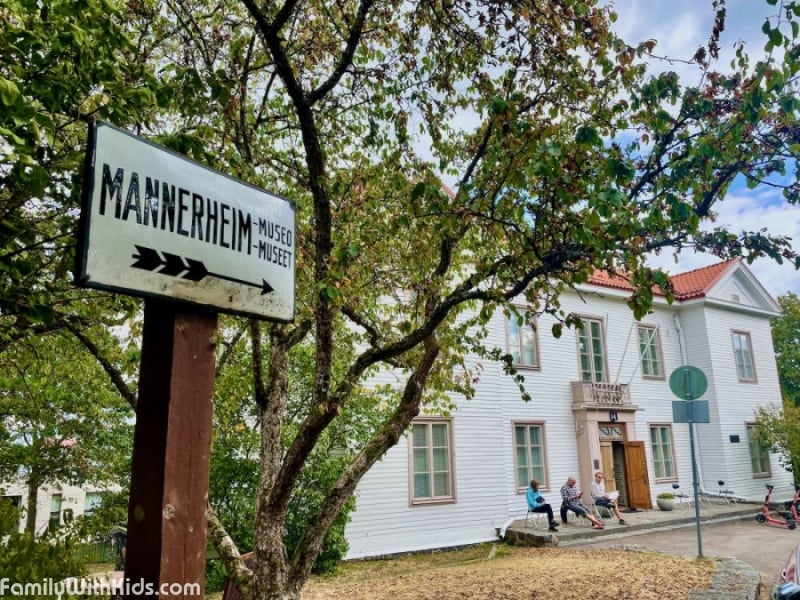
The Mannerheim Museum tells the story of the famous commander and leader of the Finnish state. It is organized in a house on Kalliolinnantie 14. Marshal Gustav Mannerheim rented this building for accommodation for 27 years (1924-1951). The interior has been preserved in its original form.
The living conditions and items allow a deeper understanding of the famous Finn’s personality traits. In everyday life, Mannerheim was unpretentious, sleeping on a folding bed. However, he used a luxurious desk for work and gathered a large library. One room houses hunting trophies, and another room is dedicated to military regalia.
- Hours: Friday-Sunday, 11:00-16:00
- Ticket Prices (in euros): Adults – 12, Concessions – 10, Children under 12 – free
Museum of Dolls and Toys
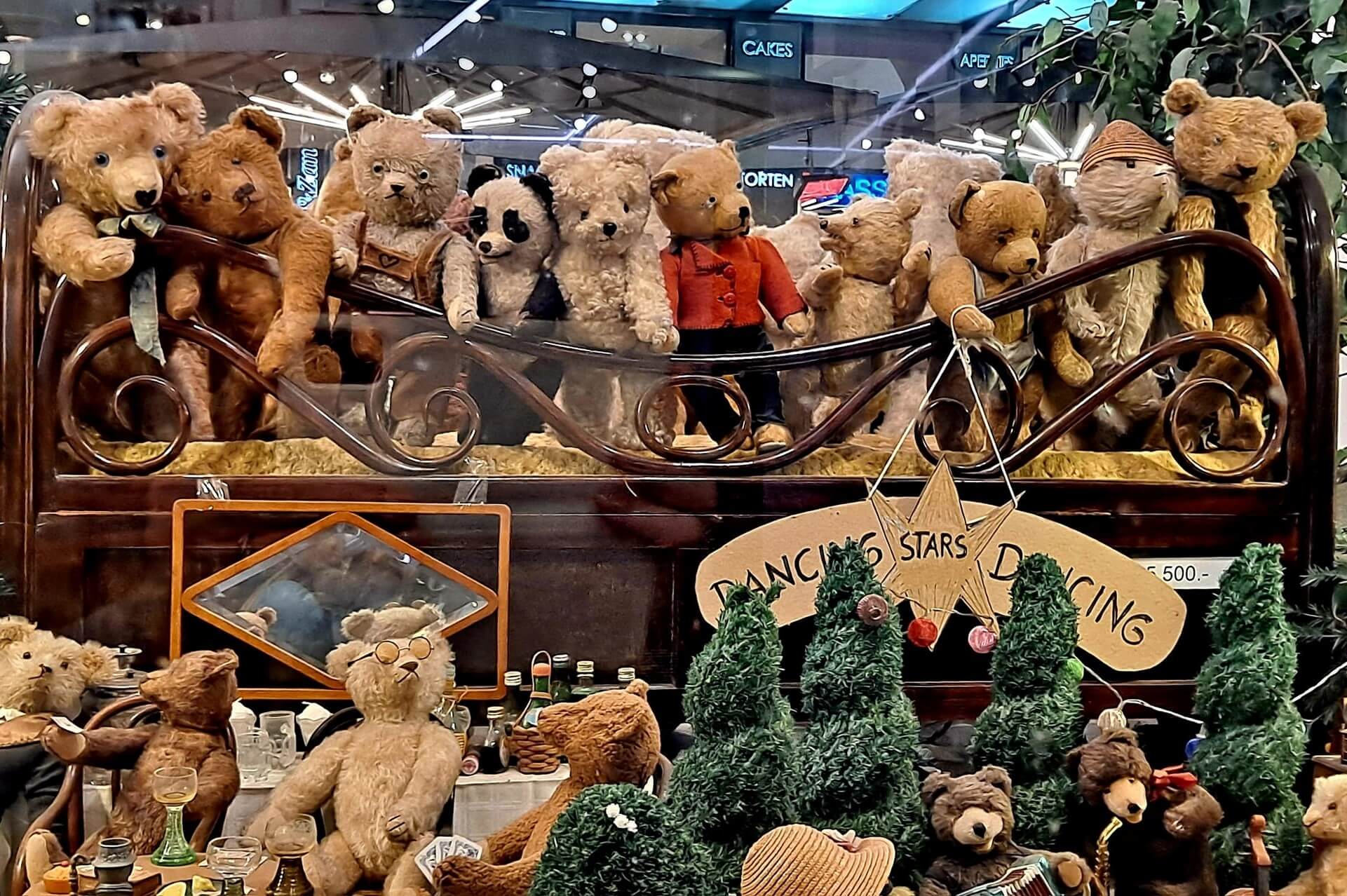
A huge attraction for children and adults alike is the amazing museum that houses a diverse collection of dolls and toys. The collection was initiated by local artist P. Tandefelt. For a long time, she searched for rare items that children used to play with in the past. In 1985, she opened her private collection to the public.
The exhibition is housed in a cozy wooden building built in 1911 on the territory of the Suomenlinna fortress. The museum’s collection includes over 2,000 exhibits from the 19th and 20th centuries. In addition to dolls and traditional stuffed toys, display cases feature board games, miniature houses, and tin soldiers.
- Hours: April-June: daily, 11:00-17:00; June-August: daily, 11:00-18:00; August-September and March-April: 11:00-17:00; December 1-22 and December 26-January 6: 11:00-16:00
- Closed: October, November, and the end of December
Museum of Technology
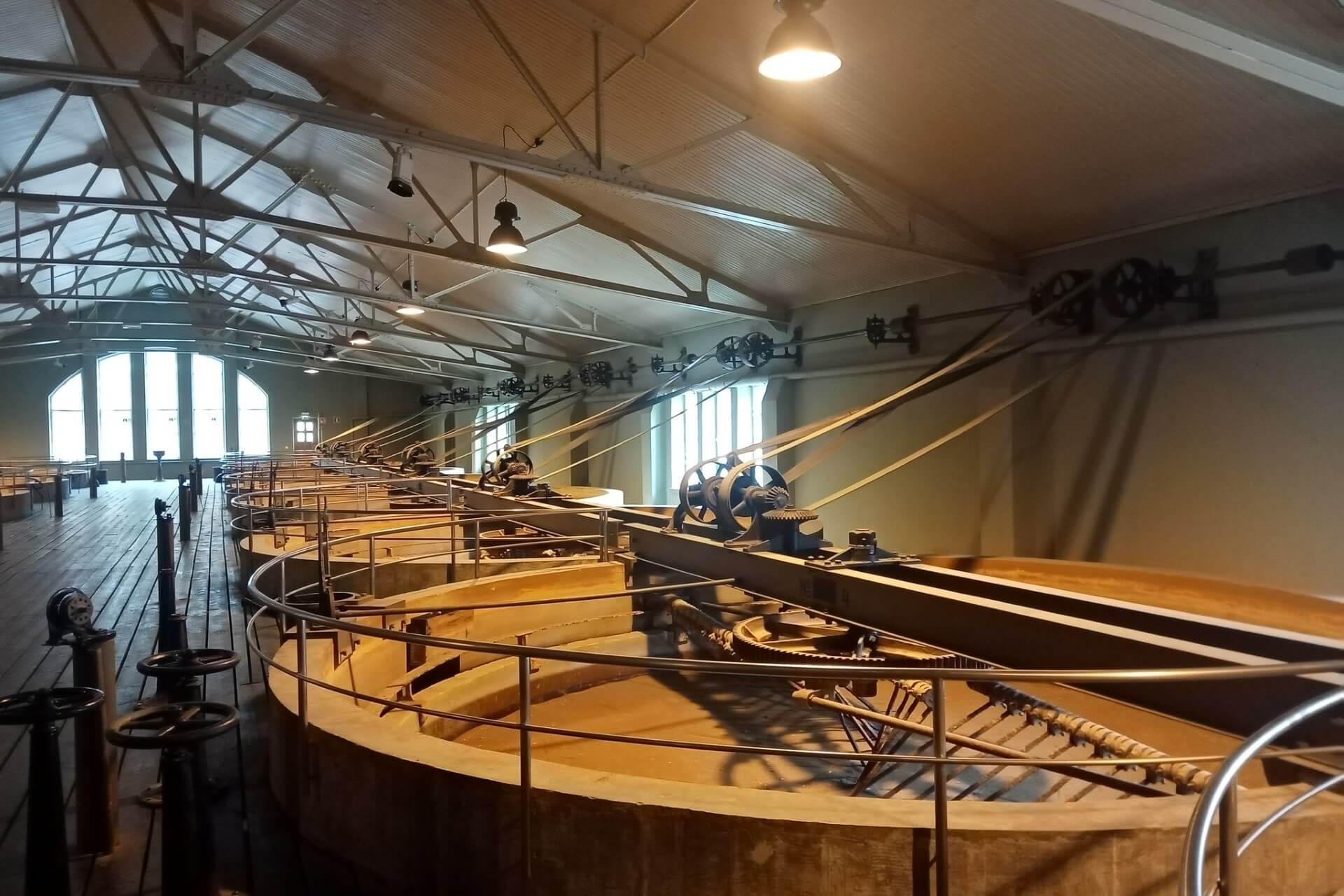
The National Museum of Technology occupies a plot (5,000 square meters) on an island in the center of Helsinki. The storage facilities were set up in a complex of hydraulic structures on the banks of the Vantaa River. The number of exhibits exceeds 60,000 items, the photo archive contains 46,000 images, and the library holds 45,000 books and documents. The materials collected in the museum help trace the path of industrial development in Finland. The halls cover various aspects of modern technological innovations.
- Hours: Tuesday-Wednesday, 9:00-17:00; Thursday, 9:00-19:00; Saturday-Sunday, 11:00-17:00; Closed on Monday
Gallen-Kallela Museum
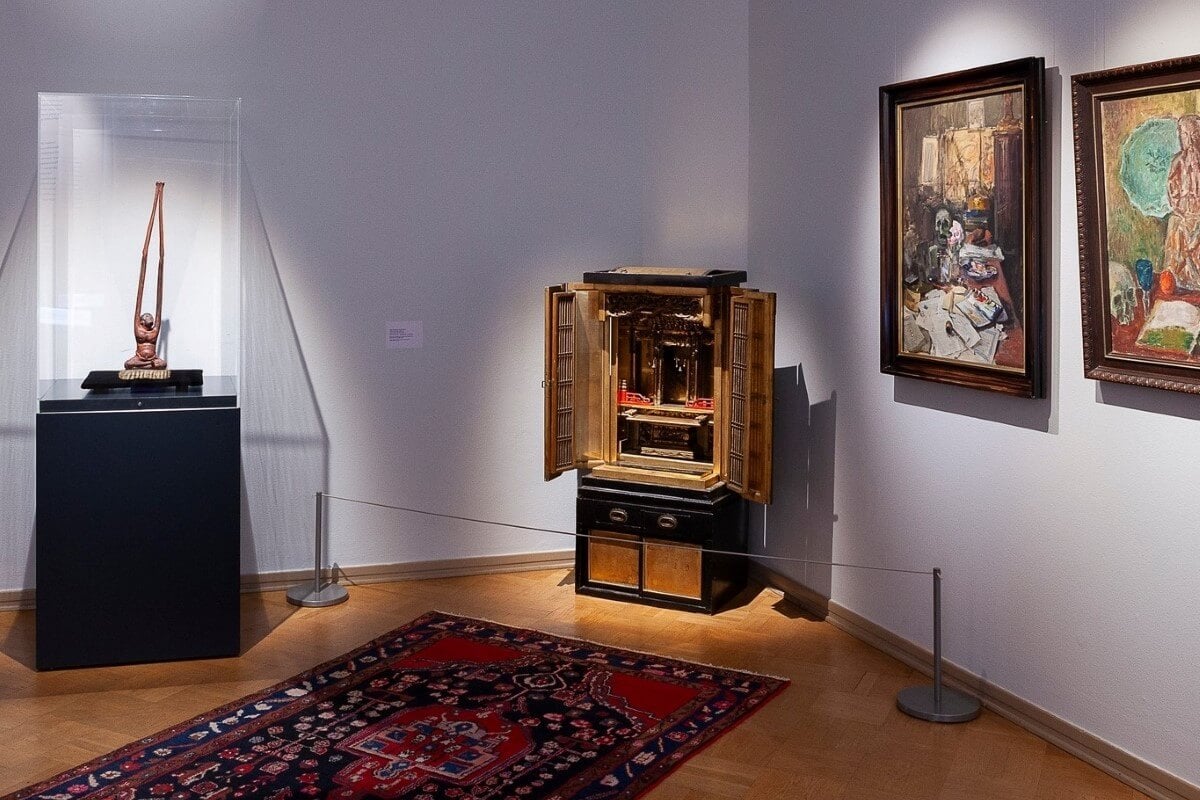
Native of Finnish lands, Akseli Gallen-Kallela, became famous for his illustrations for the national epic “Kalevala.” In the suburban area of Tarvaspää, he built a house-studio, which he used for living and working. In the 1960s, the premises were transformed into a museum dedicated to the artist. The collected and preserved exhibits tell the story of the life and work of the outstanding Finnish painter.
Among the master’s works are drawings, graphics, sculptures, photographs, and decorative-applied items. The rooms also display documents and personal belongings of Gallen-Kallela. The museum regularly organizes exhibitions dedicated to contemporary Finnish art.
Ticket Prices (in euros): Adults – 9, Concessions – 7, Students – 5, Children under 18 – free
Hours: September-May: Tuesday-Saturday, 10:00-16:00; Sunday, 10:00-18:00; June-August: daily, 10:00-18:00

